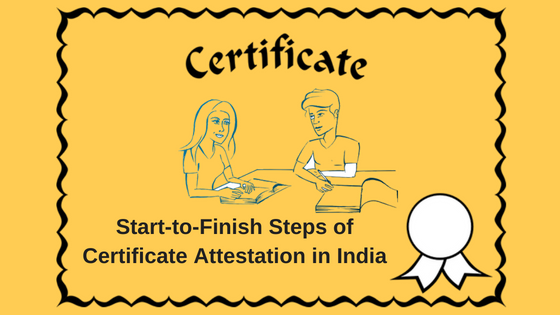My sister met a severe accident in UK last year. She owned property and had some funds in the bank. Since her condition was critical, I had to be with her at any cost. But my request for UK visa was rejected.
A Power of Attorney (PoA) helped me in transferring her funds and property to my name while being in India (which my sister desperately wanted to). But what I did to reach there, let I narrate in the correct procedure from start to finish. Please walk through all these steps thoroughly for getting rid of agony due to delay or rejection of documents (which i faced):
What to attest?
Diverse countries seek distinctive documents for processing immigration. The purpose of emigration determines exactly which documents must be verified. For example, a student will have to produce his pre-verified degree while an entrepreneur must get stamp on his business papers. So, it’s almost the cause that identifies.
Nonetheless, there are certain documents that are commonly required whatever the purpose would be. I have jotting down the checklist of immigration documents which are statically required:
- Passport
- Copy of passport
- Police Clearance Certificate (PPC)
- Birth Certificate/Non-Availability of Birth Certificate (NABC)
- Marriage Certificate
- Ration Card/Aadhar Card
- Educational docs
- Divorce Certificate
- Marriage Availability Certificate (CENOMAR or Single Status Certificate)
- Business documents (for setting up business at foreign)
Pre-verify docs this way!
Aspiring to study or set up business abroad? The aspirants must apply for the visa first. The checklist has already been mentioned to you above. How certificate attestation in India proceeds-you would learn through the given steps.
Pre-verification initializes this step. For it, the applicant must visit the office of District Commissioner (DC) or Divisional Magistrate (DM) or SDM (Sub-Divisional Magistrate). Collecting all the original documents, he must submit them in his office.
The original documents are sent to the concerned person of the school or college from where the degree is attained. For example, a B-Tech student must submit his original degree at DC office for cross-examination. Later, the DC sends those documents to the engineering college that issued it for cross.
Further, the competent authority (in this case is DC) receives it back. Subsequently, the DC counter-attests and handovers it to its holder.
The verification does not end here. The recipient takes the attested papers to the Human Resource Department (HRD) of the state government for passing the next level attestation. After getting them stamped there, he counter-attests them at the Patiala House, New Delhi from the MEA office.
Apostille stamp is the final authentication that the recipient gets.
Ultimately Apostille your docs!
Apostille service is the process of docs’ authentication. In 1961, the Hague Convention was established with 98 member countries for making the immigration procedure legally a walkover. Russia, Middle East, UK, all South American countries, African countries and many European countries are collated to it. India is one of the member countries of this convention. There are nations like Australia, New Zealand and Kenya, that don’t come under this convention.
The recipient must submit his pre-validated documents here to get its counter-stamp. The convention’s competent authority does not conduct cross-examination of the papers since they have been counter-attested by the HRD department. It just fulfills the formality of stamping that is mandatory.
From there, the recipient must submit his apostilled documents at the embassy of the country where he wants to fly.











